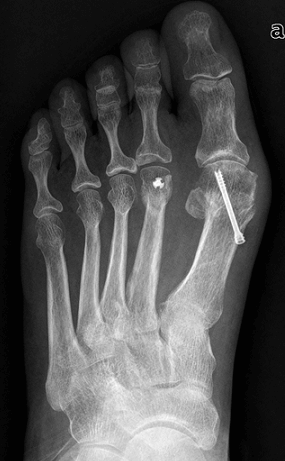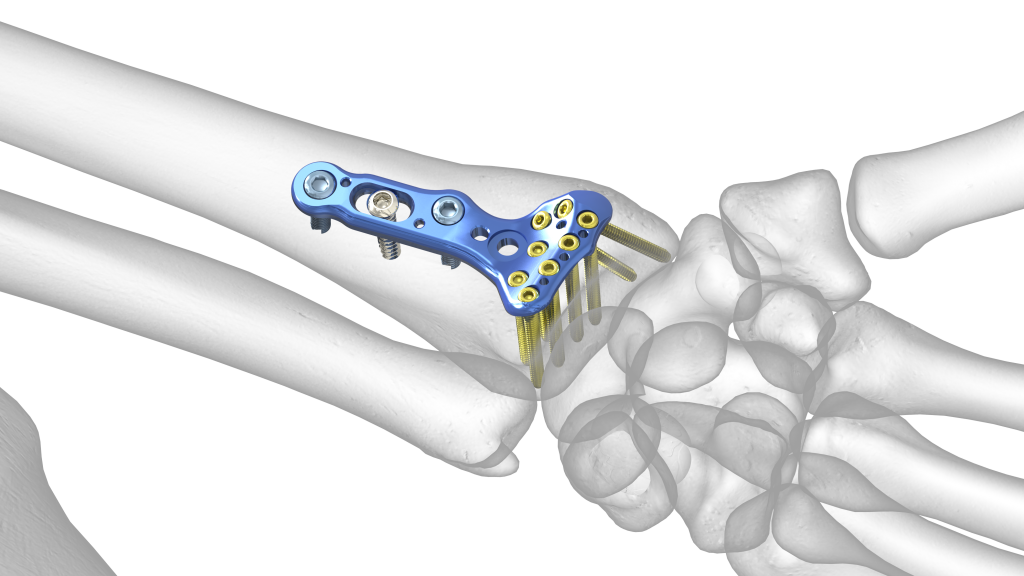.jpg)
For all traumatic or chronic diseases of the musculoskeletal system, the Centrokinetic private clinic in Bucharest is prepared with an integrated Orthopedic Department, which offers all the necessary services to the patient, from diagnosis to complete recovery.
The Department of Orthopedic Surgery of Centrokinetic is dedicated to providing excellent patient care and exceptional education for young physicians in the fields of orthopedic surgery and musculoskeletal medicine.
Centrokinetic attaches great importance to the entire medical act: investigations necessary for correct diagnosis (ultrasound, MRI), surgery, and postoperative recovery.
Discover the open MRI imaging center in our clinic. Centrokinetic has a state-of-the-art MRI machine, dedicated to musculoskeletal conditions, in the upper and lower limbs. The MRI machine is open so that people suffering from claustrophobia can do this investigation. The examination duration is, on average, 20 minutes.
The fracture of the distal radius epiphysis is extremely common and frequent, the osteoporotic bone being very susceptible to this fracture. Mechanism of production is a fall injury with the hand in extension (most common) or flexion. Depending on how the patient falls with his hand, these fractures can be classified into:
- Dorsal fracture (Colles)
- In-Plane displacement fracture (Smith)
- Intra-articular fracture (Barton).
.jpg) | .jpg) |
This fracture is very common among the elderly and especially the elderly, being easy to diagnose due to pain, functional impotence, and deformity of the fist region, symptoms that accompany this type of fracture.
For fractures without displacement, it is recommended an immobilization with a V-forearm-palmar splint, for 4 weeks, following another radiological control and change the immobilization with a circular plaster. For the stable displaced fractures, a closed reduction with local anesthesia (Xilina) is performed, followed by a 3-week immobilization in the V-forearm-palmar splint, then in a physiological position. 3 weeks.
The orthopedic reduction involves performing a puncture at the level of the fracture site through which the evacuation of the local hematoma is followed, followed by performing local anesthesia with Xilina 1%. The reduction involves performing a movement in the opposite direction to that which caused the fracture. If the hand is very swollen, apply ice and keep the hand in a prone position (up) for 30 minutes.
For unstable displaced fractures, surgical treatment is recommended.
 | .png) |
Under general or locoregional anesthesia (in the brachial or axillary plexus), an incision of about 5 cm is made on the palmar region. A thorough dissection of the subcutaneous tissue is performed and the radial artery and the median nerve are identified and removed from the operative plane.
.jpg) |  |
The fracture is reduced and fixed with an anatomical titanium premulate plate and screws. The plates are of different shapes and sizes, so as to fit any type of fracture, in order to obtain a reduction as close as possible to the initial shape of the bone.
This plaque can last for the rest of his life, and the patient can do MRI with it.
In the situation where the lower extremity of the ulna is also fractured, it is possible to opt for the reduction and fixation of this bone. The decision is made intraoperatively and depends on how the fracture is reduced after fixing the radius and the characteristics of the fracture.
Post surgery
After the operation, the patient remains hospitalized for 1 day until he is discharged. He will receive pain medication and antibiotics during his hospitalization. The operated limb is not immobilized, the patient is advised not to make hand movements, except elbow and fingers.
Patients will wear a compressive bandage at the elbow for 5 days and will use a special orthosis, which can be easily removed for personal hygiene. Patients can return to daily activities quickly, in a maximum of 4-6 weeks.
.jpg)
At home
Although recovery after this operation is much faster than classic intervention, it will still take a few weeks for you to fully recover. You should expect pain and discomfort for at least a week postoperatively.
You must be careful not to force the operated area by making very wide flexion and extension movements in the first weeks because the pain and discomfort can worsen. You can take a bath, but without wetting the bandage and incisions. The threads are suppressed at 14 days postoperatively.
At 6 weeks postoperatively, an x-ray is necessary to see how the affected joint heals. Driving is allowed after 6 weeks, and hard physical work after 12-16 weeks.
Physical therapy plays a very important role in the rehabilitation program, and the exercises must be followed by a physical therapist until the recovery period ends.
It is very important to follow the recovery program strictly and seriously for the surgery to be a success. Our medical team works, on average, 18-24 weeks with the patient until the complete recovery of the operated area.
.jpg)
Following any surgery, medical recovery plays an essential role in the social, professional, and family reintegration of the patient. Because we pursue the optimal outcome for each patient entering the clinic, recovery medicine from Centrokinetic is based on a team of experienced physicians and physical therapists and standardized medical protocols.

MAKE AN APPOINTMENT
CONTACT US
MAKE AN APPOINTMENT
FOR AN EXAMINATION
See here how you can make an appointment and the location of our clinics.
MAKE AN APPOINTMENT

































































































































